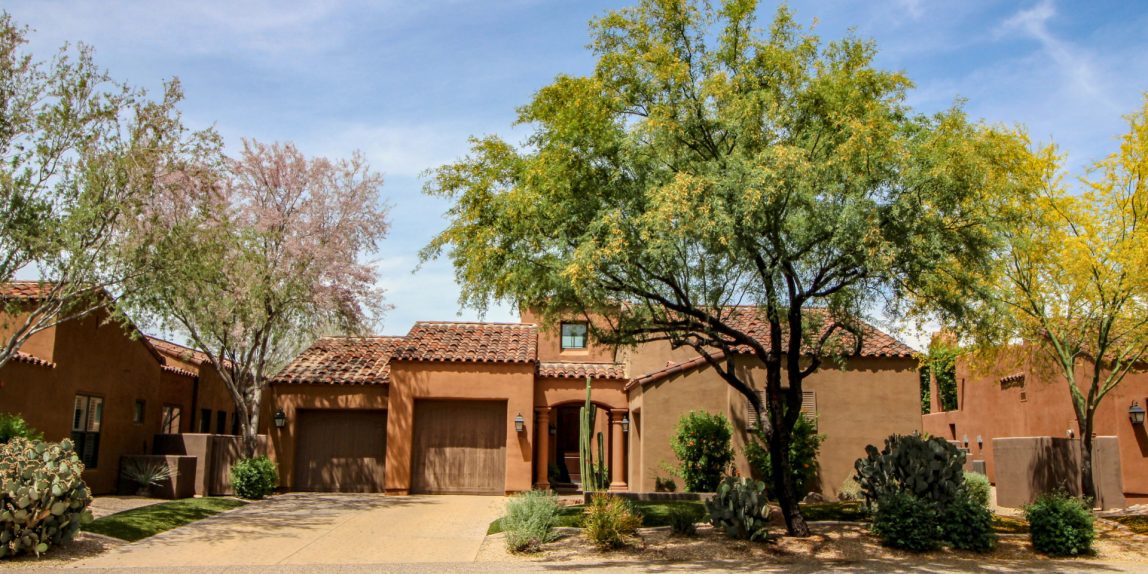Reading time: 5 minutes
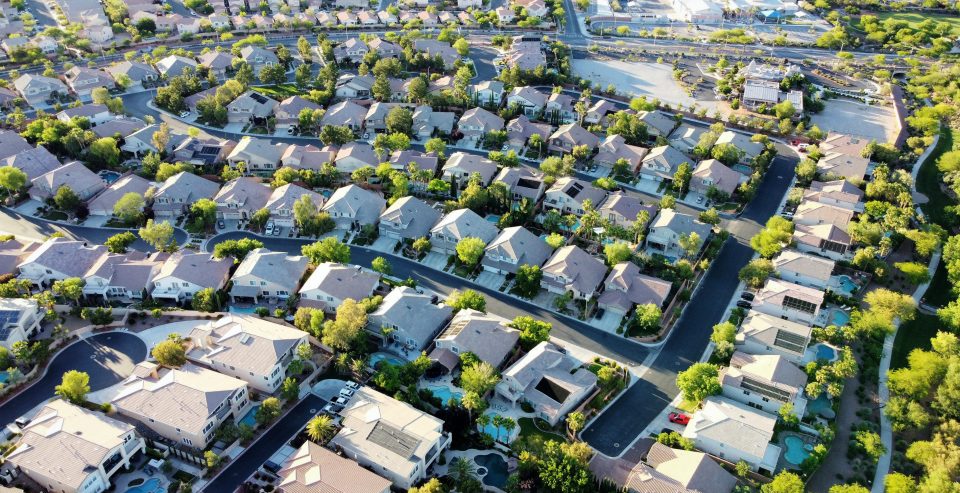
In warm climates like the one we live in, planting trees around your home isn’t just about aesthetics, but a clever way to save energy and help our environment. Shade trees provide natural cooling, energy savings, and make the atmosphere around us better.
Tree Placement
To begin, let’s consider how the sun moves in the sky and how it affects us at different times. During the hot summer afternoons, when air conditioners are working hardest, shading the west side of your house can offer many benefits and is the first area you should cover with shade.
In some places, like Nevada and Arizona, where it’s hot in the spring and summer, it’s also a good idea to shade the south side of your house. On the other hand, in places like Utah where it gets colder in the fall and winter, not shading the south side can help to keep your house warmer.
It’s also important to check how much sun comes through each window in the house. Planting trees a bit to the side of the window can block some of the heat and light without blocking the view outside. If you have an air conditioner outside your house, placing trees near it can help it work less hard during the summer, leading to decreased energy usage and utility bills.
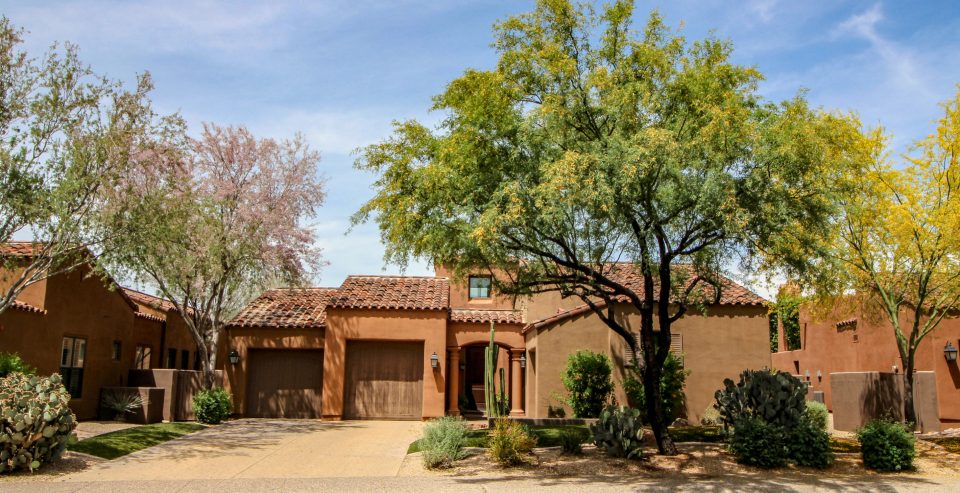
When planting trees, make sure they’re not too close to your house. If they are, they could damage the foundation or exterior of your home. It’s also necessary to check with your local utility company to make sure the trees won’t grow into power lines or disturb underground pipes.
In places like Southern Nevada, where we’re experiencing the Urban Heat Island effect, strategically using trees in the landscape becomes even more important. By planting more trees in the landscape, you’ll receive increased amounts of shade and the valley will experience a cooling effect as a whole. In the absence of enough urban tree canopy, experts predict that we’ll see more than 100 days a year with temperatures about 100 degrees by 2050.
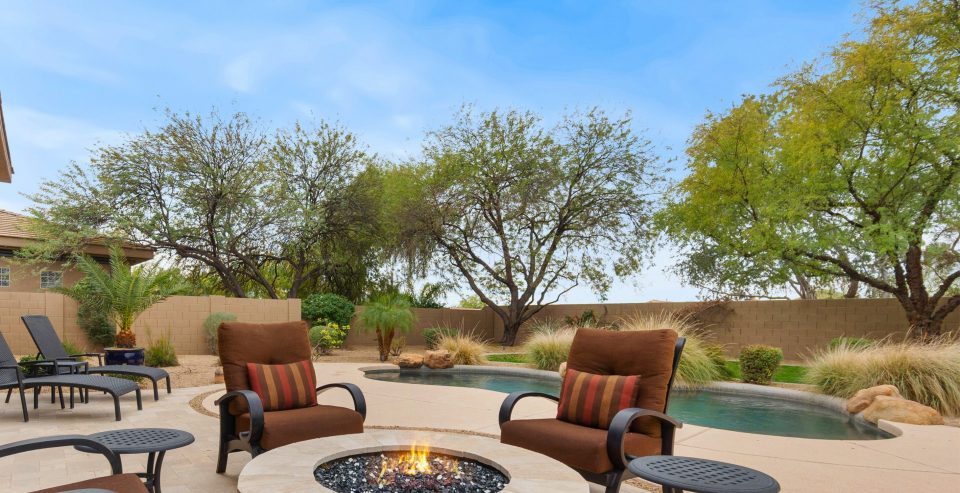
Popular Tree Varieties for the Desert Southwest
When choosing trees for your landscape in the desert Southwest, it’s essential to select varieties that can withstand the region’s unique climate conditions. Here are some popular tree varieties that thrive in the desert Southwest:
- Palo Verde Trees: Known for their green trunks and yellow flowers in spring, Palo Verde trees are well-adapted to desert conditions. They are drought-tolerant and provide excellent shade.
- Desert Willow: With its attractive pink or purple flowers and slender leaves, the Desert Willow adds beauty to any landscape. It’s also drought-tolerant and attracts pollinators like bees and butterflies.
- Mesquite Trees: Mesquite trees are well-suited to desert landscapes, offering filtered shade and a unique architectural appeal. They are drought-tolerant and thrive in hot, arid climates.
- Southern Live Oak: With its broad, spreading canopy and evergreen foliage, Southern Live Oak provides ample shade and adds a touch of elegance to desert landscapes.
- African Sumac: African Sumac is valued for its dense, green foliage and tolerance to heat and drought. It’s an excellent choice for providing shade and privacy in desert gardens.
- Chaste Tree: Also known as Vitex, the Chaste Tree produces clusters of fragrant, lavender flowers that attract butterflies and bees. It’s drought-tolerant and adds beauty to desert landscapes.
- Chinese Pistache: Chinese Pistache trees offer vibrant fall foliage in shades of red, orange, and yellow. They are drought-tolerant and thrive in hot, dry climates.
- Bay Laurel: Bay Laurel, also known as Laurus nobilis, is an evergreen tree valued for its aromatic leaves, which are commonly used in cooking. It’s drought-tolerant and adds year-round interest to desert landscapes.
- Shoestring Acacia: Shoestring Acacia is prized for its narrow, weeping form and feathery foliage. It’s drought-tolerant and adds a unique architectural element to desert gardens.
Want more information on choosing the perfect tree in our desert climate? Download the free PDF of Trees for Tomorrow HERE.
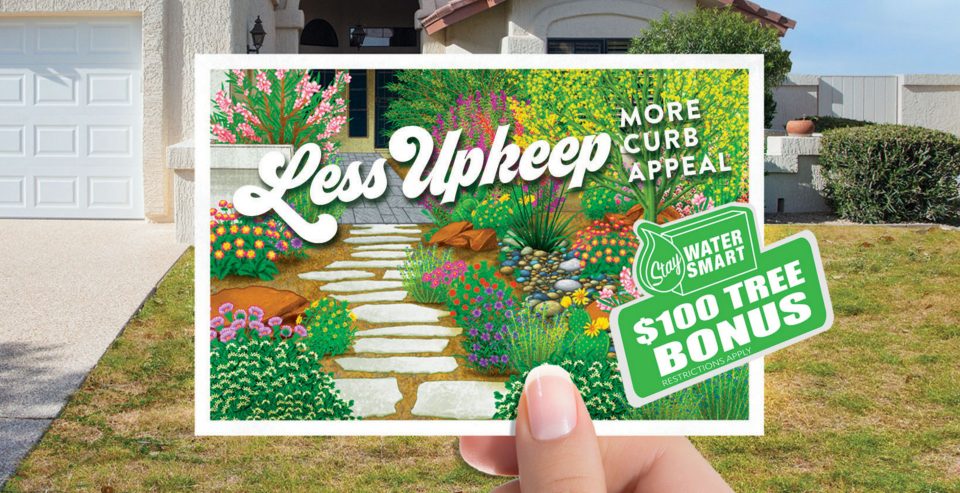
SNWA Tree Enhancement Program
To encourage people to plant the right kind of trees, the Southern Nevada Water Authority (SNWA) has introduced a Tree Enhancement Program to encourage the planting of climate-resilient trees. Through this program, new participants in the Water Smart Landscapes rebate initiative can receive a $100 bonus for each qualifying tree planted.
By increasing the tree canopy, we can improve the cooling, comfort, and air quality within the Las Vegas valley. Moreover, it will help to protect the limited water supply by helping to lower temperatures around landscapes and buildings. To ensure the longevity of your landscape, consult the Southern Nevada Regional Plant List for trees that will be able to thrive in warmer conditions. Visit SNWA.com for more information about the Tree Bonus and to explore water-smart plant options for your landscape.
